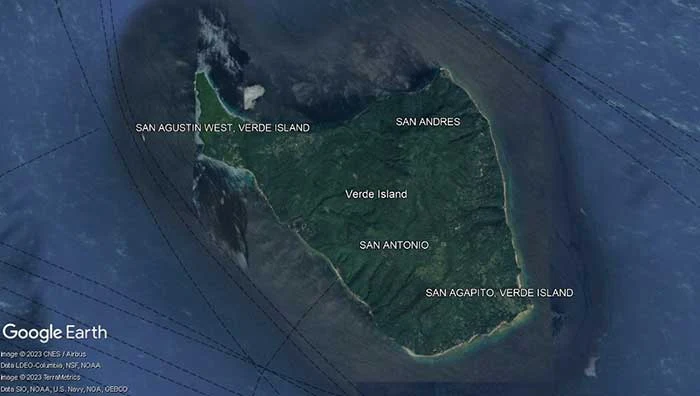The Little Known Invasion of Verde Island in February 1945
As has been already extensively discussed in other articles in this web site, by the 31st of January 1945, forces of the United States Eighth Army under the command of General Robert L. Eichelberger had already landed on the beaches of Nasugbu. The purpose of the landing of troops there, at least initially, was to support Alllied forces who had driven south to Manila from the 9 January Lingayen Gulf landing and to prevent the escape south of Japanese forces from the capital.
By February, as battle raged on the streets of Manila for the liberation of the capital from Japanese occupation, the Verde Island Passage was still not entirely secure. This passage is a roughly 100 kilometer long sea lane between Batangas and the northern coasts of the island of Mindoro1.
At this time, Allied forces were already firmly ensconced in Leyte and Mindoro; but the liberation of Luzon was still an ongoing process. Batangas was still very much in Japanese hands. Hence, assuring the security of the Verde Island Passage for the steady flow of troops and supplies was a top priority for American military planners.
 |
| Verde Island, Batangas on Google Earth. |
Crucial to the security of the passage was the Verde Island after which it was named. The island, which is volcanic in nature, is due south of Barrio Ilijan in what is now Batangas City and to the northeast of Puerto Galera. The island is geopolitically a part of Batangas City.
In February 1945, the island was still under Japanese control and was defended with a 75mm artillery gun at the western side and two more at the southeastern end2. These last two were so-located to defend against vessels coming in from the Visayas and were, thus, of particular concern to the Americans.
There was, according to intelligence gathered, a Japanese garrison on the island with 56 soldiers, although this number was somewhat inflated in the report of the U.S. Eighth Army on the Leyte-Samar operations as well as the clearing of the so-called Visayan Passages3. The higher number is not necessary anomalous because there was also intelligence stating that reinforcements had arrived on Verde Island. The Eighth Army report also stated that the Japanese had on the island both a radio as well as a radar station.
Thus, elements of the 19th Infantry, 24th Division of the United States Army were ordered “to clear Verde Island of enemy forces as part of the campaign to clear a more direct water route from Leyte to Luzon4.” The task force consisted of seven officers and ninety-four enlisted men and was supported by Filipino guerrillas based in Mindoro and probably Batangas as well.
It was imperative that the task force slip into Verde Island undetected because fast Japanese Q-boats based on the coasts of Batangas could quickly be summoned to engage if summoned by radio. The troops left Calapan in Oriental Mindoro on board landing craft late on 24 February.
Two PT boats were sent ahead of the landing craft so that any observers on Verde Island, and especially because there was bright moonlight, would come to the conclusion that they were seeing routine patrols. The ruse apparently worked, so that early the next morning, the task force landed on the island completely without opposition.
So complete was the element of surprise achieved by the raiding force that “no enemy reaction developed until nine hours later that same day5.” In the course of the invasion, the two 75mm artillery guns on the southeast were captured and seventeen Japanese soldiers were killed. Six members of the American task force were wounded.
Later that day, the 25th of February, Verde Island was turned over to Filipino guerrillas for the mopping up of the remaining pockets of Japanese resistance. The American task force, meanwhile, returned to San Jose in the southern part of Mindoro Island.
As Japanese resistance increased, probably due to reinforcements brought in from nearby Batangas, elements of the 21st Infantry of the United States Army had to be brought in on 1 March to support the guerrillas. The remaining 75mm artillery gun on the western side of the island was captured and two days later, Verde Island was considered “sufficiently secured.”
Eighty-two more Japanese were killed while another three were captured. American forces were withdrawn and the island, presumably, was left to be defended by guerrillas. By this time, Manila was about to be liberated and in a few more days, the liberation of the towns of Batangas by the 11th Airborne would commence.
2 “VERDE ISLAND, Clearing of Enemy Forces From, Report,” by A.T. Baker III, February 1945.
3 “Report of the Commanding General Eighth U.S. Army on the Leyte Samar Operation,” by Staff United States 8th Army, online at the United States National Archives and Records Administration Digital Library.
4 Baker, op cit.
5 Staff U.S. Army op cit.
